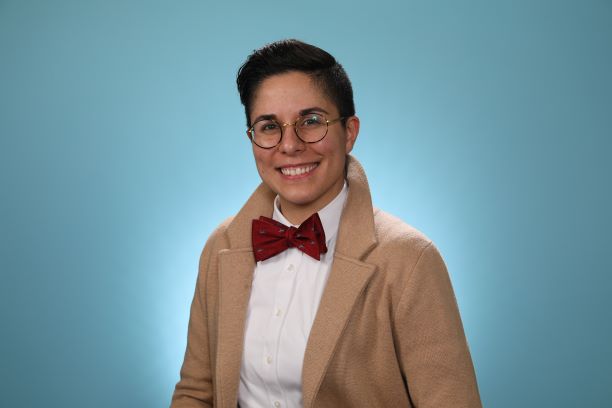An Introduction to LGBTQIA+ Issues in Radiation Oncology From the Medical Physicist's Perspective
J Vadas1*, T Roth2*, V Ainsworth3*, K Osterman4*, (1) Beaumont Health, Royal Oak, MI, (2) Washington University School of Medicine, Springfield, IL, (3) ,E. Harwich, MA, (4) NYU Langone Health, New York, NY
Presentations
10:42 AM Intersection of Race and LGBTQIA+ (Toni, She/Her) - T Roth, Presenting Author
10:54 AM Two Sides of the Same Coin: Looking at Inclusion from Patient Facing and Trainee Directions (Victoria, She/They and Sunshine, She/Her) - V Ainsworth, Presenting Author
11:06 AM Two Sides of the Same Coin: Looking at Inclusion from Patient Facing and Trainee Directions (Victoria, She/They and Sunshine, She/Her) - K Osterman, Presenting Author
11:18 AM Audience Q&A - V Ainsworth, Presenting Author
MO-A-TRACK 1-0 (Monday, 7/26/2021) 10:30 AM - 11:30 AM [Eastern Time (GMT-4)]
The relationship between the LGBTQIA+ community and the healthcare industry has historically been laden with fear and distrust. This persists today with access to care being denied or limited through policies including religious exemptions, discriminatory insurance requirements, and legislation targeting the LGBTQIA+ community. In addition, a lack of high-quality training for medical practitioners and supporting staff often results in a climate that fails to make LGBTQIA+ patients feel safe when they are at their most vulnerable. These barriers to care result in an inability and/or unwillingness to receive routine healthcare screenings, lower the likelihood of completing treatment, and ultimately lead to poorer outcomes among this population. The LGBTQIA+ community is multifaceted and varied; one’s socioeconomic status and racial identity are key factors in dictating the level of severity of these health disparities.
While the challenges to reducing inequality can seem formidable, there are ways in which we, in the Medical Physics community, can begin laying the foundation for compassionate care for our LGBTQIA+ patients and provide support for our LGBTQIA+ colleagues. In this session, we aim to provide a brief historical background on this community’s relationship to healthcare, tools that can be utilized to enhance both the patient and colleague experience, and examples pertaining to ongoing departmental efforts dedicated to promoting and championing inclusivity.
Learning Objectives:
1. Identify the historical and current healthcare disparities facing the LGBTQIA+ community.
2. Critically explore the intersection of race and LGBTQIA+ identities and its implications.
3. Identify and discuss steps being taken by clinics to enhance the comfort and safety of our LGBTQIA+ patients.
4. Demonstrate ways in which Members can ensure a welcoming and safe environment for LGBTQIA+ trainees and colleagues.
Handouts
- 166-57587-15651646-171537-1719853426.pdf (K. Sunshine Osterman)
- 166-57588-15651646-176393-924973945.pdf (Victoria Ainsworth)
- 166-57586-15651646-176393-825949525.pdf (Victoria Ainsworth)
Keywords
Not Applicable / None Entered.
Taxonomy
Not Applicable / None Entered.
Contact Email











